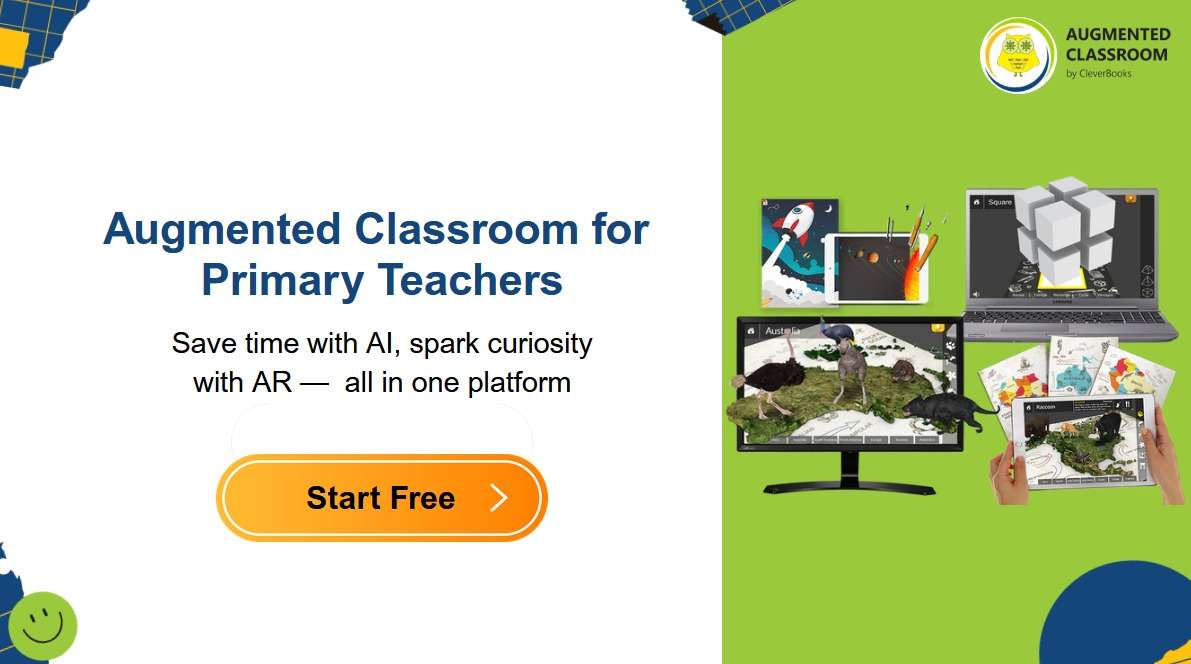Written by Sarah Chen
Last month, I watched five-year-old Emma’s face light up as she held up her tablet and watched a 3D cylinder pop out of her worksheet, spinning slowly in mid-air. “It’s like a can!” she exclaimed, finally understanding the connection between the flat circle on paper and the three-dimensional shape in her world. This magical moment perfectly captures why I’ve become such an advocate for using augmented reality (AR) in early childhood mathematics education.
The Challenge of Teaching Abstract Concepts to Concrete Thinkers
As PYP teachers, we know that kindergarten students are naturally concrete thinkers. They learn best through hands-on experiences and struggle with abstract concepts that exist only on paper. Traditional shape instruction often involves showing 2D pictures of shapes and expecting young minds to make connections to the 3D world around them – a significant cognitive leap that many five and six-year-olds aren’t ready to make.
This is where augmented reality becomes a game-changer, serving as the perfect bridge between concrete and abstract thinking.
My AR Journey with CleverBooks’ Augmented Classroom
After months of research, I decided to pilot CleverBooks’ Augmented Classroom platform in my kindergarten math lessons. What drew me to this particular tool was its intuitive design and curriculum alignment – crucial factors when working with our youngest learners.
The setup was surprisingly straightforward. Students simply point their tablets at specially designed worksheets, and 3D shapes materialize on their screens. But the magic isn’t just in the visual appeal; it’s in how AR transforms passive learning into active exploration.
Assessment Through AR: Beyond Traditional Methods
One unexpected benefit has been how AR enhances formative assessment. When students manipulate 3D shapes on their screens, I can observe their understanding in real-time:
- Spatial Awareness: How confidently do they rotate and examine shapes from different angles?
- Vocabulary Development: Do they naturally use terms like “edges,” “faces,” and “vertices” when describing what they see?
- Pattern Recognition: Can they identify similar shapes in different orientations?
I use a simple observation checklist on my tablet, noting these behaviors as students work. This provides much richer assessment data than traditional paper-and-pencil evaluations.
Implementation Tips for Fellow Educators
Start Small and Scale Up
Don’t try to transform your entire curriculum overnight. I began with just one 20-minute AR lesson per week, gradually increasing as students (and I) became more comfortable with the technology.
Focus on Learning, Not Technology
The AR is a tool, not the objective. I constantly remind myself that the goal is mathematical understanding, not technological proficiency. Sometimes the most profound learning happens when we put the devices down and discuss what we’ve just experienced.
Measuring Success: What I’ve Observed
After few lessons of regular AR integration, the changes in my students are remarkable:
- Engagement: Attention spans during math lessons have increased from an average of 8 minutes to 15-20 minutes.
- Spatial Skills: Students demonstrate significantly better understanding of 3D shapes and their properties. They can now identify shapes from unusual angles and describe them using proper mathematical vocabulary.
- Transfer Learning: Most exciting is watching students make spontaneous connections between lesson content and their environment. During outdoor play, I’ve heard them identify the cylindrical playground equipment and discuss the rectangular prisms in our building blocks.
Looking Ahead: Expanding AR Integration
My success with shape instruction has inspired me to explore AR applications in other mathematical concepts. I’m currently developing AR number lines for addition and subtraction, and I’m excited about the possibilities for pattern work.
The key is remembering that AR should enhance, not replace, hands-on learning experiences. The goal is creating a rich, multi-sensory learning environment where digital and physical experiences complement each other.

Final Thoughts for PYP Practitioners
Incorporating augmented reality into kindergarten mathematics isn’t about keeping up with trends – it’s about meeting our students where they are and providing them with tools that match their natural learning preferences. When we can transform abstract mathematical concepts into concrete, manipulable experiences, we’re honoring the developmental needs of our young learners while preparing them for an increasingly digital world.
The wonder in Emma’s eyes when that cylinder came to life wasn’t just about cool technology – it was about mathematical understanding clicking into place. And that’s exactly what we’re aiming for in every PYP classroom.
